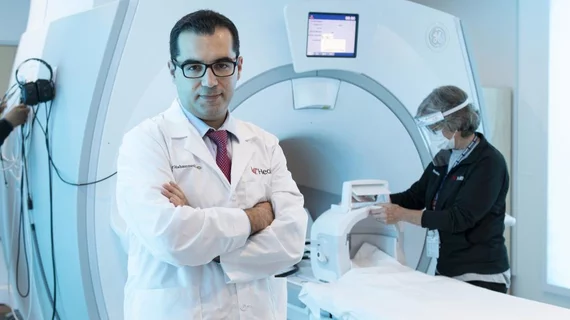For first time, radiologists find correlation between COVID-19 brain MRI and lung CT imaging
Radiologists have been unearthing the effects of COVID-19 on the lungs and brain using CT and MRI, respectively, over the past year. Now for the first time, they have found a visual correlation between severity in the two organs that could have important implications, according to new research.
With this guidance, clinicians can potentially predict how severely a patient might experience neurological symptoms from the novel coronavirus by looking at lung imaging. This, University of Cincinnati researchers believe, could allow rads to pinpoint symptoms earlier, leading to better treatment responses.
“These results are important because they further show that severe lung disease from COVID-19 could mean serious brain complications, and we have the imaging to help prove it,” Abdelkader Mahammedi, MD, an assistant professor of radiology at UC, said Friday. “Future larger studies are needed to help us understand the tie better, but for now, we hope these results can be used to help predict care and ensure that patients have the best outcomes.”
For the study, Mahammedi and co-authors from several international institutions reviewed electronic medical records and imaging findings from hospitalized patients treated between March and June of last year. Of the 135 who met the inclusion criteria, with abnormal chest CT findings and neurological symptoms, 36% (49) also developed abnormalities in brain images and were more likely to experience stroke symptoms.
Scientists hope the study will help physicians to classify COVID-19 patients into groups more likely to develop brain issues based on the severity of their CT scores. This could prove pivotal in deploying therapies earlier, particularly for stroke patients where time is of the essence.
“Little information has been available on identifying potential associations between imaging abnormalities in the brain and lungs in COVID-19 patients,” Mahammedi said. "Imaging serves as proof for physicians, confirming how an illness is forming and with what severity and helps in making final decisions about a patient's care,” he added.
UC researchers are slated to present these findings at the American Society of Neuroradiology’s annual meeting in May and were published Thursday in the ASNR’s flagship journal. Large institutions in Italy, Brazil and Spain also contributed, and the work was supported by the National Institutes of Health.

